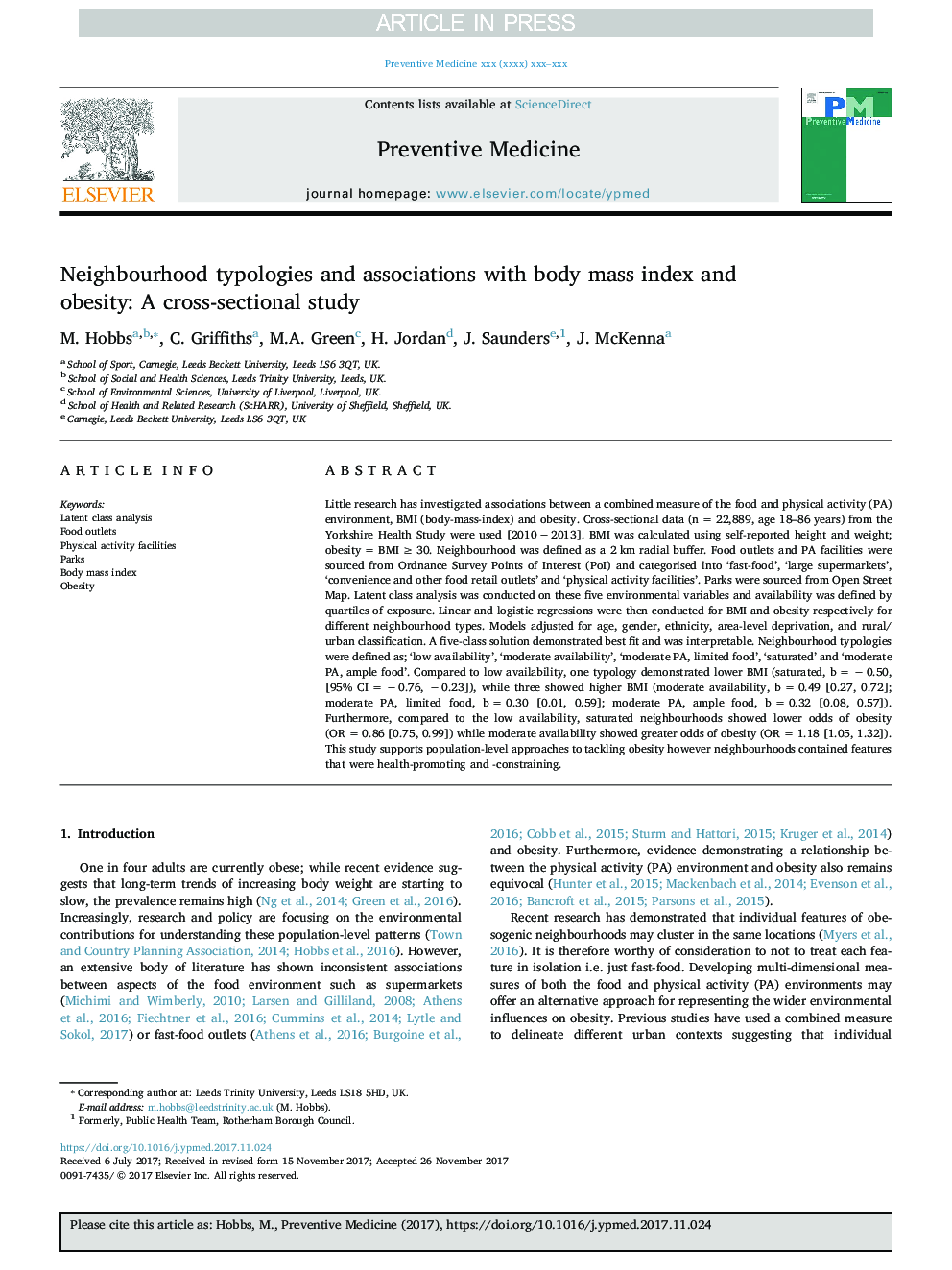| کد مقاله | کد نشریه | سال انتشار | مقاله انگلیسی | نسخه تمام متن |
|---|---|---|---|---|
| 8693595 | 1581601 | 2018 | 7 صفحه PDF | دانلود رایگان |
عنوان انگلیسی مقاله ISI
Neighbourhood typologies and associations with body mass index and obesity: A cross-sectional study
ترجمه فارسی عنوان
نوع شناسی و ارتباطات با شاخص توده بدنی و چاقی: یک مطالعه مقطعی
دانلود مقاله + سفارش ترجمه
دانلود مقاله ISI انگلیسی
رایگان برای ایرانیان
کلمات کلیدی
تجزیه و تحلیل کلاس خوش آمدید، فروشگاه های مواد غذایی، امکانات فعالیت فیزیکی، پارک ها، شاخص توده بدن، چاقی،
موضوعات مرتبط
علوم پزشکی و سلامت
پزشکی و دندانپزشکی
طب مکمل و جایگزین
چکیده انگلیسی
Little research has investigated associations between a combined measure of the food and physical activity (PA) environment, BMI (body-mass-index) and obesity. Cross-sectional data (n = 22,889, age 18-86 years) from the Yorkshire Health Study were used [2010 â 2013]. BMI was calculated using self-reported height and weight; obesity = BMI â¥Â 30. Neighbourhood was defined as a 2 km radial buffer. Food outlets and PA facilities were sourced from Ordnance Survey Points of Interest (PoI) and categorised into 'fast-food', 'large supermarkets', 'convenience and other food retail outlets' and 'physical activity facilities'. Parks were sourced from Open Street Map. Latent class analysis was conducted on these five environmental variables and availability was defined by quartiles of exposure. Linear and logistic regressions were then conducted for BMI and obesity respectively for different neighbourhood types. Models adjusted for age, gender, ethnicity, area-level deprivation, and rural/urban classification. A five-class solution demonstrated best fit and was interpretable. Neighbourhood typologies were defined as; 'low availability', 'moderate availability', 'moderate PA, limited food', 'saturated' and 'moderate PA, ample food'. Compared to low availability, one typology demonstrated lower BMI (saturated, b = â 0.50, [95% CI = â 0.76, â 0.23]), while three showed higher BMI (moderate availability, b = 0.49 [0.27, 0.72]; moderate PA, limited food, b = 0.30 [0.01, 0.59]; moderate PA, ample food, b = 0.32 [0.08, 0.57]). Furthermore, compared to the low availability, saturated neighbourhoods showed lower odds of obesity (OR = 0.86 [0.75, 0.99]) while moderate availability showed greater odds of obesity (OR = 1.18 [1.05, 1.32]). This study supports population-level approaches to tackling obesity however neighbourhoods contained features that were health-promoting and -constraining.
ناشر
Database: Elsevier - ScienceDirect (ساینس دایرکت)
Journal: Preventive Medicine - Volume 111, June 2018, Pages 351-357
Journal: Preventive Medicine - Volume 111, June 2018, Pages 351-357
نویسندگان
M. Hobbs, C. Griffiths, M.A. Green, H. Jordan, J. Saunders, J. McKenna,
